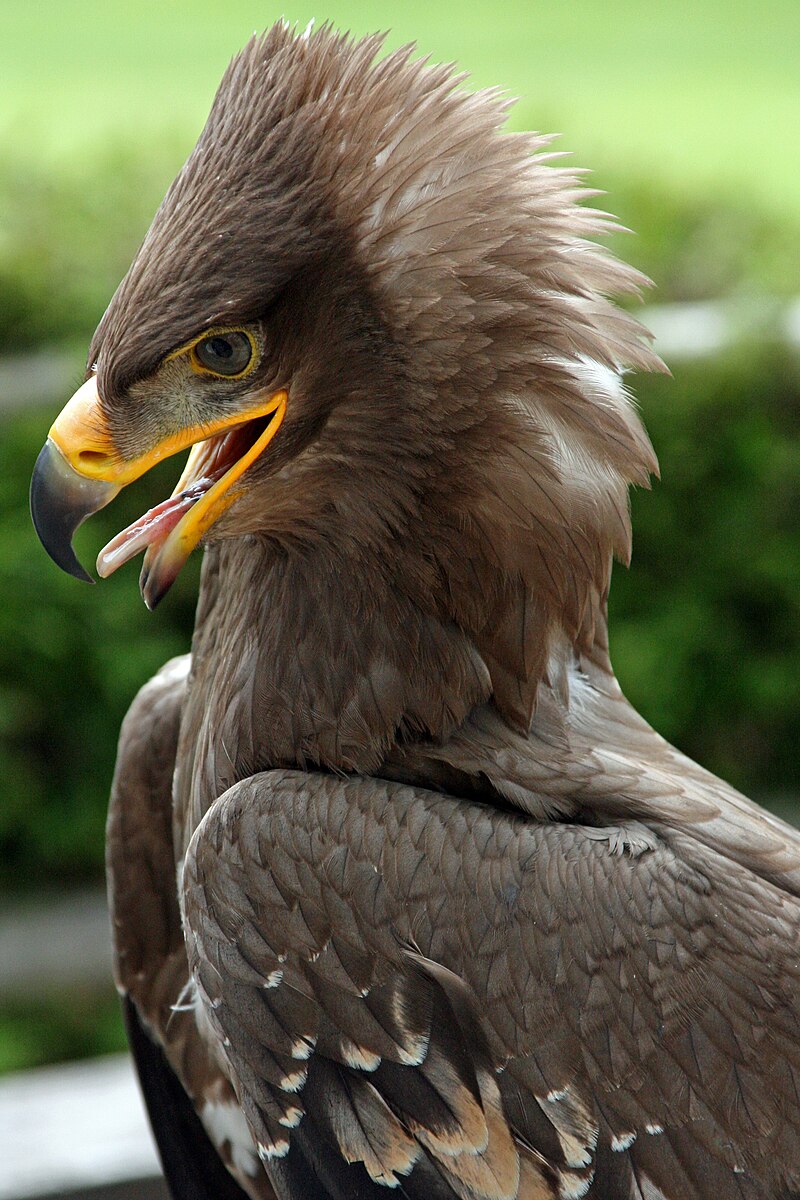The steppe eagle and the bald eagle are two of the most impressive birds of prey, each with its unique characteristics and adaptations. As an expert on these magnificent creatures, I’m excited to share a comprehensive comparison to help you better understand the differences and similarities between these two avian predators.
Size and Appearance
The steppe eagle is a large bird with a wingspan of approximately 214 cm (7 ft) and a weight of up to 5 kg. In contrast, the bald eagle is even larger, with a wingspan of 2.3 m (7 ft 7 in) and a weight of up to 6.3 kg.
Physically, the steppe eagle has a distinctive brown plumage with white spots on its wings and back, while the bald eagle is known for its striking white head and tail, contrasting with its dark brown body and wings. Both species have sharp, hooked beaks and powerful talons, making them formidable hunters.
Habitat and Distribution
 Image source: Steppe Eagle by Fimb
Image source: Steppe Eagle by Fimb
The steppe eagle is found in the vast open steppes and savannas of Europe and Asia, including Mongolia, Russia, Kazakhstan, China, and parts of the Middle East and Africa. These eagles are known for their migratory behavior, covering vast distances during their annual journeys.
In contrast, the bald eagle is native to North America and can be found in a variety of habitats, including forests, mountains, and coastal areas from Alaska to Newfoundland and south to Mexico.
Dietary Preferences
The steppe eagle is a versatile predator, feeding on small mammals, birds, reptiles, insects, and even carrion. The bald eagle, on the other hand, primarily feeds on fish, but will also consume small mammals, waterfowl, and carrion.
Conservation Status
The steppe eagle is currently listed as an Endangered species due to habitat loss, exposure to pesticides, and collisions with power lines. Conservation efforts are underway to protect this majestic bird and its dwindling populations.
In contrast, the bald eagle was once listed as an Endangered species in the United States but has since made a remarkable recovery and is now classified as Least Concern. This success story is a testament to the effectiveness of conservation measures and the resilience of these birds.
Ecological Significance
Both the steppe eagle and the bald eagle play crucial roles in their respective ecosystems as top predators. They help maintain the balance of their prey populations and contribute to the overall health and diversity of their habitats.
The steppe eagle, in particular, is an important indicator species, as its presence or absence can provide valuable insights into the state of the steppe and savanna ecosystems it inhabits. The bald eagle, on the other hand, is a symbol of national pride and a testament to the power of conservation efforts.
Conclusion
The steppe eagle and the bald eagle are two remarkable birds of prey, each with its own unique characteristics and adaptations. While they differ in size, habitat, and dietary preferences, they share a common role as apex predators in their respective ecosystems.
As an expert on these fascinating creatures, I hope this comprehensive comparison has provided you with a deeper understanding and appreciation for the steppe eagle and the bald eagle. Whether you’re an avid birdwatcher, a nature enthusiast, or simply someone who marvels at the wonders of the natural world, these majestic birds are sure to captivate your imagination.

